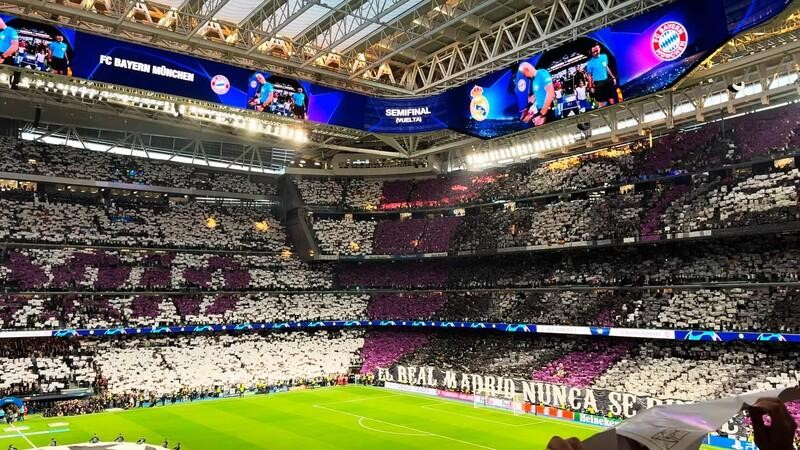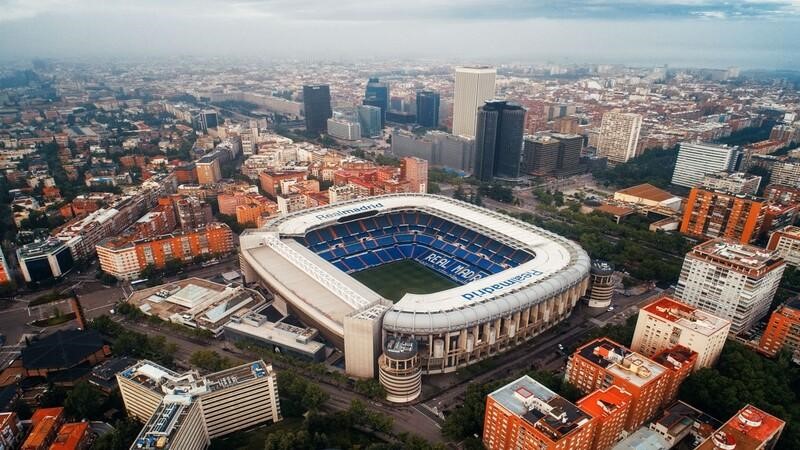The Santiago Bernabéu is more than a football stadium in Madrid. It stands as a landmark of Spanish sport and a theater of unforgettable nights.
Santiago Bernabéu at the heart of Madrid
The stadium sits in the Chamartín district, right in the flow of city life. It is surrounded by streets full of cafés, fans, and the white shirts of Real Madrid. For locals, this ground is as familiar as the Plaza Mayor or the Royal Palace.
A symbol of Real Madrid’s rise
When Real Madrid became a European giant, the Bernabéu was always in the picture. The great nights of the 1950s with Alfredo Di Stéfano lifted the club into global fame. Every goal scored in this arena added to a tradition that now defines the club’s identity. The first chants, the flags, and the white waves of supporters are still repeated today.
Fans and the matchday experience
On matchdays, the streets around the ground begin to fill hours before kickoff. Vendors sell scarves, families wear white jerseys, and chants echo down the avenue. Inside, the sound becomes a roar. Songs spread from one stand to another until the whole stadium vibrates. For those watching at home on HD football stream 90phut TV, the energy of this atmosphere is easy to feel through the screen. The connection between crowd and team creates a unique rhythm.
More than football in the city
The Bernabéu is also part of Madrid’s cultural life. Tourists take guided tours that bring them onto the pitch and into the dressing rooms. Shops and restaurants nearby live from the flow of visitors. Concerts and large events turn the arena into a stage for music and entertainment. For the city, it is both an economic driver and a symbol of pride.
Architecture and design through decades
The Bernabéu has never been a static place. Its design has shifted with the times, reflecting new eras in Spanish football and architecture. Each renovation has tried to balance history with innovation.
From its 1947 opening to modern times
When it opened in 1947, it was one of the most ambitious stadiums in Europe. It had the capacity to welcome over 70,000 fans, which was a bold number for its time. The design was simple but strong, made to house a growing fan base. Over the years, the structure became more than concrete and steel. It became a home for football passion.
Renovations that shaped new eras
The 1982 World Cup forced a big renovation. Roofs were added to protect fans, seats improved comfort, and modern access points were created. Later upgrades in the 2000s introduced VIP boxes, media centers, and new seating that pushed the capacity close to 85,000. The most recent project is even more ambitious. With a futuristic roof, digital screens, and high-tech facilities, the Bernabéu aims to remain a leader for decades.
Capacity and technology for the future
Today the stadium is planned to include a retractable roof and a 360-degree screen. Its design allows for quick changes between football matches, concerts, and events. It combines the charm of its long history with technology that rivals any modern arena. For Madrid, this means the Bernabéu will remain a key landmark in sport and culture.
Santiago Bernabéu in football history
A stadium can be beautiful, but it becomes legendary through the matches it hosts. The Bernabéu has seen finals, titles, and moments that changed the course of football.
European Cup and Champions League nights

A symbol of Madrid’s resounding success in Europe
This ground is famous for Champions League drama. Real Madrid’s comebacks, late goals, and celebrations are etched into memory. From the 1950s European Cups to recent victories, the Bernabéu has staged football at its highest level. Supporters describe the nights as electric, with pressure mounting on visiting teams. The stadium has been central to Madrid’s unmatched success in Europe.
Spain’s national and international stage
The Bernabéu is not limited to club football. It hosted the 1982 World Cup final between Italy and West Germany. It has seen Copa del Rey finals, Champions League finals, and Spain national team matches. Each event added to its international reputation. For many players, lifting a trophy here is a career highlight. Fans worldwide check football predictions on 90phut before big fixtures, and many of those predictions point to decisive nights at this ground.
Legends and unforgettable moments
The roll call of legends linked to the Bernabéu is endless. Di Stéfano and Puskás gave it glamour in the 1950s. Raúl symbolized loyalty and class in the 1990s and 2000s. Cristiano Ronaldo made it his fortress during a record-breaking era. Each star left a trace in the stadium’s story. Alongside them came historic moments, like Zidane’s stunning volley in 2002 or Sergio Ramos’s injury-time header in 2014. These memories define why the Bernabéu is called a cathedral of football.
Conclusion
The Santiago Bernabéu is more than a venue. It is a place where football history has been written, where Madrid shows its identity, and where fans feel united. With its modern transformation, the stadium is ready to host more legends and more nights that will echo far beyond Spain.






